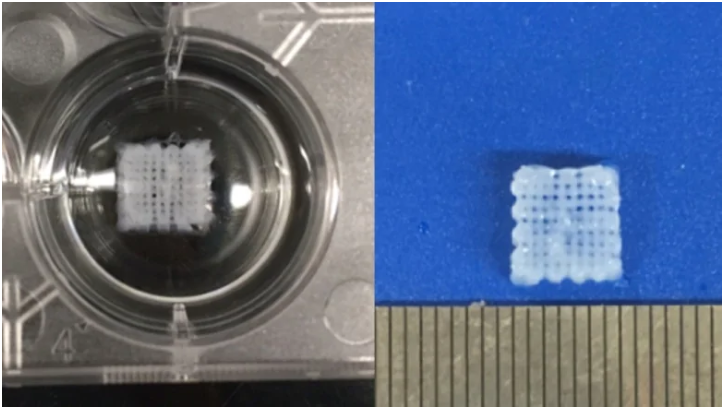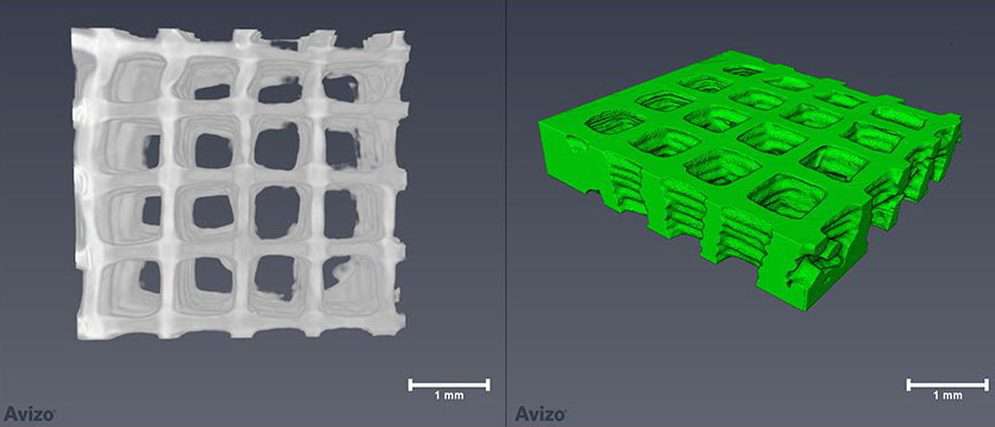 Many injuries to the body can be healed, but nerve damage is something that can be permanent, resulting in the loss of the ability to properly feel, move or utilize the injured body part. There is a treatment for nerve damage that involves grafting healthy nerves onto the damaged parts, but the treatment isn’t perfect, according to Liqun Ning, a post-doctoral fellow in the Tissue Engineering Research Group at the University of Saskatchewan.
Many injuries to the body can be healed, but nerve damage is something that can be permanent, resulting in the loss of the ability to properly feel, move or utilize the injured body part. There is a treatment for nerve damage that involves grafting healthy nerves onto the damaged parts, but the treatment isn’t perfect, according to Liqun Ning, a post-doctoral fellow in the Tissue Engineering Research Group at the University of Saskatchewan.
“Even the successful grafts only normally restore a portion of the nerve cell regional function so we are trying to find some new ways to solve this problem,” he said.
Ning is the lead author of a recent paper called “3D bioprinting of scaffolds with living Schwann cells for potential nerve tissue engineering applications,” which you can access here. In the paper, the researchers describe their goal: to 3D print scaffolds and place them within the body to try to regenerate healthy nerves. Though the scaffolds are extremely small, they are highly detailed and were created using the Canadian Light Source center at the University of Saskatchewan.
The cells seeded onto the scaffold are called Schwann cells, which are supporting cells in the nervous system that can force nerve cells to grow properly. The hope is that the scaffolds, once placed in the body, will stimulate new, healthy nerve cells to grow. The results of the study show that the 3D printed scaffolds can promote the alignment of the Schwann cells and provide cues to direct the extension of dorsal root ganglion along the printed strands.
This is only the first step, according to Ning, but it’s a step that shows great potential.
“We’re trying to test our method and the structure, the 3D printed scaffolds, with animals and to see if the structure helps to regenerate the peripheral nerve of the animal,” said Ning.
It will still be some time before any human trials can take place, but there’s a lot of promise there – like any other medical development, it will take time. The University of Saskatchewan has done some other impressive work with 3D bioprinting before, like creating 3D printed heart tissue. One of the authors of the heart tissue study, Xiongbao Chen, also worked on the recent nerve cell study.
Nerve damage can happen in the body in a number of ways – not just through injury, but due to illnesses such as diabetes. It can cause great difficulty for people who suffer from it, so any development towards restoring nerve function is an exciting one. Other work has been done advancing the bioprinting of nerve cells, so there’s hope for these patients, who number in the millions. Ning and his team believe that their work could eventually outperform grafts in restoring nerve function.
Before the first 3D printed organ is transplanted into a human being, developments such as this one may end up making the biggest difference in the lives of patients. Nerve damage is debilitating and even dangerous, and restoring the function to those damaged nerves could dramatically improve and even save lives.
Authors of the paper include Ning, Chen, Haoying Sun, Tiphanie Lelong, Romain Guilloteau, Ning Zhu, and David J. Schreyer.
Discuss this and other 3D printing topics at 3DPrintBoard.com or share your thoughts below.
[Sources: Saskatoon Star Phoenix, CBC/Images courtesy of Liqun Ning]
Subscribe to Our Email Newsletter
Stay up-to-date on all the latest news from the 3D printing industry and receive information and offers from third party vendors.
Print Services
Upload your 3D Models and get them printed quickly and efficiently.
You May Also Like
The Market and Industry Potential of Multi-Material 3D and 4D Printing in Additive Electronics
Additive manufacturing leverages computer-based software to create components for products by depositing either dielectric or conductive materials, layer by layer, into different geometric shapes. Since its birth in the 1980s,...
3DPOD 262: Bio-inspired Design for AM with Dhruv Bhate, Arizona State University
Dhruv Bhate is an associate professor at Arizona State University. There, he looks at structures, materials, and design. Previously, he worked at PADT as well as in the semiconductor and...
3DPOD 261: Tooling and Cooling for AM with Jason Murphy, NXC MFG
Jason Murphy´s NXC MFG (Next Chapter Manufacturing) is not a generalist service; instead, the company specializes in making tooling. Using LPBF and binder jet, the company produces some of the...
3DPOD 260: John Hart on VulcanForms, MIT, Desktop Metal and More
John Hart is a Professor at MIT; he´s also the director of the Laboratory for Manufacturing and Productivity as well as the director of the Center for Advanced Production Technologies....


































